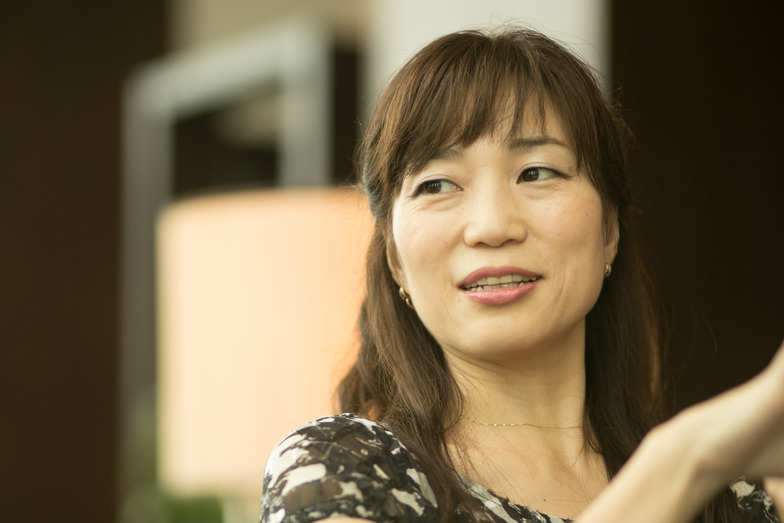Today's media landscape is undergoing radical transformation due to digitalization. Amid growing focus on content marketing, the expansion of curated media, the mediafication of platforms like SNS, and the diversification of advertising formats such as native ads, it has become necessary to redefine the role of primary information media.
This time, we discuss the future form of media that builds brands with two representatives from digital media companies actively accelerating their digital strategies.

From left: Keisuke Konishi (Dentsu Inc.), Motoko Imada (Infobahn/Media Gene), Yuko Hoshino ( Financial Times )
The Rapidly Changing Media Landscape and the Crisis Facing Primary Information Media
Konishi: Today, there's a lot of discussion about the media undergoing drastic changes due to digitalization. However, much of the talk centers on ad tech and the advertising business. Personally, I feel we should be examining the fundamental value of media itself more deeply. So, today, I'd like to explore the theme "The Future of Media That Builds Brands." First, could you briefly share your understanding of the current situation and challenges facing media today?
Imada: Yes. Since the advent of the internet, media companies have been constantly grappling with how to conduct business amid shifting audience information consumption trends. Particularly today, a global challenge exists for primary information media (media that generate their own content), including traditional media, to sustain business models that generate sufficient revenue to cover information development costs.
Intensified competition from various new players, coupled with smartphones greatly increasing the ways users receive information, has led to overwhelming information overload. Furthermore, the expansion of SNS and curated media has made it increasingly difficult for media outlets to control their own information distribution. Even the information-seeking behaviors we once took for granted—like "I like this, so I'll check out this media outlet" or "I like this media outlet, so I'll read this article"—are becoming a thing of the past, except perhaps for a few media brands with strong recognition.

Hoshino: Of course, publishers worldwide recognize they cannot survive by clinging to print alone and are working to transform their business models to adapt to digitalization. In the case of the Financial Times (FT), while its readership centers on global executives, among its approximately 700,000 paid subscribers, 500,000 already subscribe to its digital media.
What is the essence of a media brand's value?
Konishi: As digitalization makes new entrants easier and competition fiercer, the reliability and expertise of content, the quality of the customer base, and engagement with the media (involvement and expectations) are becoming the key differentiators for primary information media. I believe we've entered an era where, even in advertising (B2B) and subscription (B2C) businesses, we can't survive unless we enhance the value of the "media brand" beyond existing distribution platforms.
Hoshino: Exactly. At FT, as a quality paper, we believe the value lies in how the media brand value elevates the value of advertising. FT regularly conducts user advertising image surveys. For example, even if the same watch ad appears elsewhere, when it appears in FT, it tends to be perceived as a higher-priced item.
Imada: Regarding media brand value, the expectation that "this media outlet will deliver this kind of content" is crucial, right? However, today (with information circulating individually), media—including both content and advertising—has become unbundled. In this environment, since even the elements that have gone out can be considered part of the value, the value of each individual piece of content becomes even more crucial. Defining exactly where the line is drawn for what constitutes media value is becoming difficult. Particularly with third-party distribution (selling ads through external ad networks, etc.), the problem is that advertising and media value become separated, making it harder to create synergy.
Konishi: The inherent brand power of media lies in packaging the information, content, and experiences customers desire. It creates influence over customer expectations and actions through a consistent media experience, thereby also enhancing the value of the brand information and advertising content itself contained within. It's only natural that the value of advertising, separated from media value and customer experience, declines, leading to a race to the bottom on costs.
Hoshino: I certainly think there is a need to re-recognize the value of packaged content. In the case of newspapers, I think there is also the value of the serendipity effect of editing, that is, the value of encountering new information that you did not intend to read but did not expect. This includes the provision of recommended articles in digital media.
In terms of content, the FT has many prominent columnists, such as Martin Wolf (an economist from the World Bank) and Gillian Tett (editor of the American edition), who predict and determine global trends and disseminate information, creating unique value for the media as information content.
Imada: However, I also think it's necessary to evolve the way content is packaged to match the digital experience. Recently, we integrated our three women's media outlets, cafeglobe, MYLOHAS, and GLITTY, under the brand name gene. Each media outlet has its own entry point, but we decided to share content horizontally based on themes and interests, rather than just cutting it down to the demographics of each media unit. The reason for this is that information is going out, and more and more people are accessing content from outside, so it has become impossible to maintain the value and competitiveness of the media unless we provide a content experience that transcends individual media.
Konishi: So it's about moving beyond the traditional media-centric mindset where information was fixed to print or broadcast slots. While magazine media is highly segmented, as information becomes fluid in digital media, the potential for targeting based not just on demographics or lifestyles, but on interest graphs (interest in content) is expanding. In terms of strengthening content and media value, I find this fascinating as a new digital possibility. Also, the brand as an indicator of the origin of individual content becomes even more important.
Imada: Since we're in an era where content is extracted and deployed outside of media, brands can't be confined to thinking solely within media. I believe it's necessary to provide readers with the content they want to see, transcending the boundaries of media (brands).
Market opportunities for global media brands are expanding
Konishi: FT is known as a top-tier global media brand, but I believe digitalization has also made the opportunity for media globalization more apparent. When assisting companies with global branding, we see a significant increase in the need to reach target segments across markets, aiming to establish brands and develop customers. Western media are far ahead in this regard. Unfortunately, Japan's media industry struggles to break beyond its domestic market due to language and cultural barriers, resulting in a near absence of globally recognized media brands originating from Japan. This means they are missing out on access to growth markets, including competition with platforms like Google and Facebook that pursue global market expansion.
Hoshino: Indeed, the FT targets a global cluster of C-suite executives (CEOs, COOs, etc.), and is placed in hotels worldwide. These individuals share common attributes, behavioral styles, and values wherever they are globally, forming a community. Our content is also designed with a global perspective. We aim to be a guide, selecting and explaining what readers driving the world economy should read daily, regardless of platform. The strength of the FT lies in possessing audience data that allows us to reach this segment across markets.
Konishi: At your end, Imada-san, you're focusing on partnerships and market expansion with global digital media that specialize in specific target audiences, like Gizmodo, Lifehacker, and DIGIDAY, the digital marketing specialist media that recently launched its Japanese edition.
Imada: Yes, but establishing a media brand beyond the market is quite challenging. Especially regarding content, we need to significantly increase the proportion of original content to meet local reader needs. Also, for licensing, securing editorial control is key to success. In terms of global expansion as an advertising medium, we want to better address growing inbound market needs.
Konishi: I see. So, while building brand expectations beyond specific markets, marketing and editorial/content localization to grasp the needs of readers in each individual region are essential. In any case, as global branding competition among digital media intensifies, the rise of specialized media with clear targets and differentiation is inevitable. A key strength lies in how these platforms can contribute to advertisers' brand value. This is achieved through their expertise and authority, the appeal of their content to specific audiences, and their influence and community reach beyond mere reach metrics.
(Continued in Part 2 )








